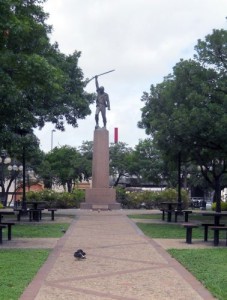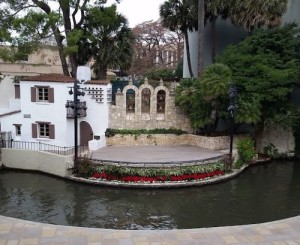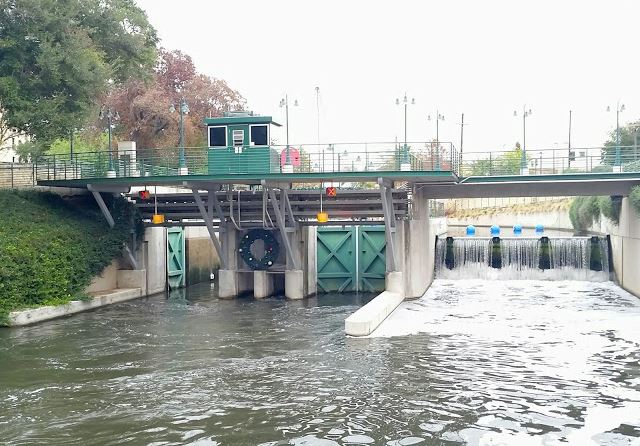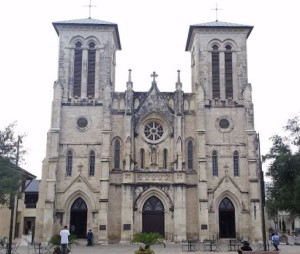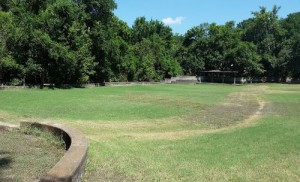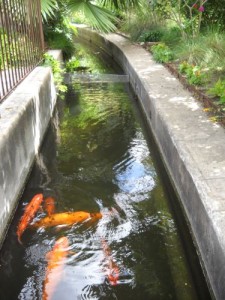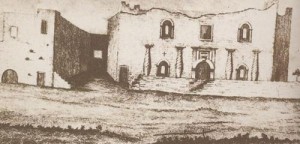This post is to give you some background on my next couple of downtown San Antonio destinations. All of these, the Institute of Texan Cultures, the Tower of the Americas, and HemisFair Park, are left over from the 1968 World’s Fair, which had the title “HemisFair ’68.” Under a principle known as “eminent domain,” the city seized the houses in and razed a residential neighborhood on the southwest side of downtown for the fair, which was a shame. Over a hundred buildings in the neighborhood were named as historic by the San Antonio Conservation Society, but ultimately only around 20 were saved. Those 20 houses are in the park today.
The theme of HemisFair ’68 was “The Confluence of Civilizations in the Americas,” and San Antonio chose to host the fair that year to honor the 250th anniversary of the founding of San Antonio. If a centennial is 100 years, a sesquicentennial is 150 years, a bicentennial is 200 years, is there a term for 250 years? Let’s check Google. Apparently 1968 was chosen in honor of the sestercentennial of the founding of San Antonio. Or possibly the quarter-millenial, since 250 is one-fourth of 1,000.
Looking at the buildings that still stand today, it seems that HemisFair ’68 must have had an odd layout. If you walk around HemisFair Park today, you’ll see that some of the buildings seem (to my mind) to point off in odd directions. The park tends mostly west-to-east, or northwest to southeast, (starting at Alamo Street) but two of the pavilions, the Women’s Pavilion and the Eastman Kodak Pavilion, are off near the southern edge, with what sure looks to me like the entrances pointing southeast, away from the center of the fair. The Universidad Nacional Autónoma de México (“UNAM”) is tucked up in a strange place alongside the Henry B. González Convention Center with a door that faces, again, away from the center of the fairgrounds. The building that UNAM is in might not be original to the fairgrounds, though. There’s something labeled “Amusement Area” in that spot on the map But it still seems kind of out of the way in its current location. I wish I could find some kind of diagram of the flow of traffic or something that would indicate why these locations seemed to make some kind of sense.
Speaking of things that didn’t make much sense, there’s Beethoven Hall. Today Beethoven Hall is home to the Magik Theatre, but originally it was the concert hall for the Beethoven Männerchor (Men’s Chorus). The planners for the fair decided that Alamo Street needed to be widened for the fair, and for some reason they decided that the best way to do this was to lop the front off of the building, then they just bricked up the hole in a way that looks very 1960s. They could have widened the other side of the street, but the resulting street would have been curved, which the planners apparently felt would not give a good impression of the city to visitors (and north of Beethoven Hall the street curves anyhow, so I don’t know why they objected to having a curved street south of the hall).
Some of the hotels that were built for the fair are still there today. Of particular note is the Hilton Palacio del Rio hotel, which, for years, held a record for construction of 202 days. The rooms were built off-site and then lifted into place with a crane. One of the hotels which is no longer there was the first La Quinta Inn. If I recall, the original La Quinta is now underneath River Center Mall.
Ultimately, the fair did make a good impression on visitors, which cemented San Antonio’s reputation as a tourist destination.

